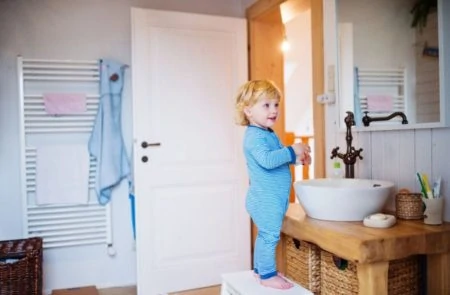Are you anxious about bringing your baby home from the hospital?
Bringing a baby home can change the way you view so many things in your house. Suddenly, things you have never given much thought to before like bookshelves and outlets can seem sinister and like a potential threat.
You are not wrong to worry. Every 24 minutes, a falling television or tipping furniture sends a child to the emergency room.
In this article, we will show you the ways you can babyproof your home, to help prevent unwanted injuries and accidents.
Babyproofing Checklist
Download Babyproof Checklist PDF
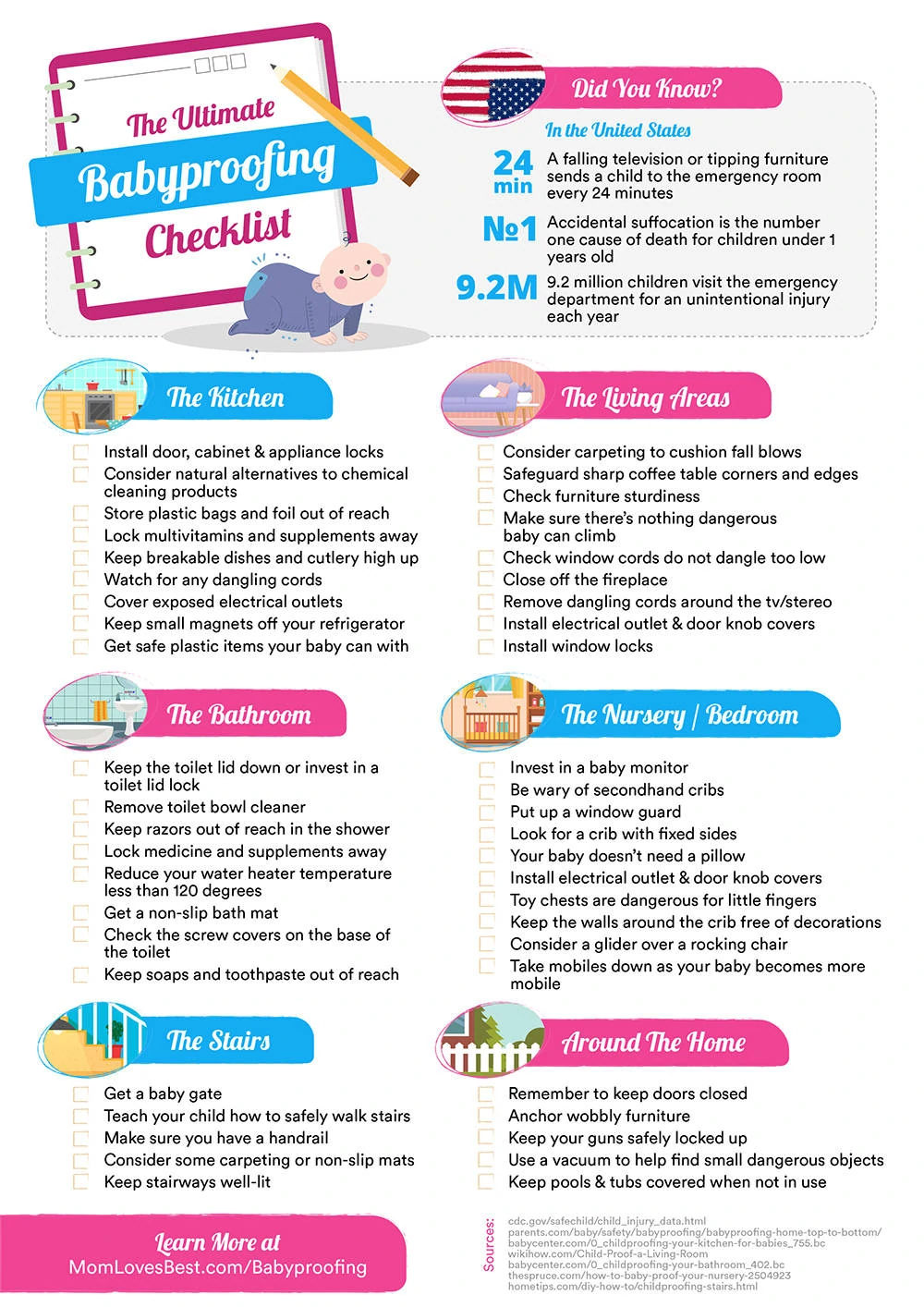
Common Injuries In the Home

Babies are so sweet and innocent. They never go looking for trouble, but they learn, in part, by exploration. They’re curious about the world around them. And at that age, they spend more time at home than any other place.
Here are some of the most common injuries babies suffer while they are at home.
- Falling and tripping: Whether they are furniture cruising and hit their head when they lose balance or they fall from their changing table or other high surfaces, falls are a real threat for babies. Fortunately, babies are tougher than they look. Most falls under two feet generally don’t cause serious injuries.
- Burns: Small children, up to 2 years old, are most often burned by scalded food and liquid in the kitchen (1). Sometimes parents are cooking and don’t know their baby has crawled up behind them. Other times, toddlers pull hot pans of liquid from the stoves down onto themselves.
- Poisoning: People keep a lot of cleaning products in cabinets sitting right on the ground level. Those cabinets are in the sight of crawling babies. All it takes is a minute or two for a child to screw off a cap on a household cleanser and get some in their mouth. U.S. Poison Control Centers estimate that about 41.9 poisoning incidents happen for every 1,000 children under 6 years old (2).
- Drowning: Drowning is a big threat for babies and one of the places they are most likely to drown is in a home bathtub (3). All it takes is for a parent to look away for a minute or two while they grab a towel from a nearby closet.
- Choking: Babies constantly put things in their mouths. Usually, those things are tiny items they find on the floor — things parents may not even know were dropped. But crawling babies see everything that’s dropped on a floor while they are exploring. Every five days, a child in the U.S. dies from choking (4).
- Furniture tipping over: Things like bookshelves and dressers can give children a great place to balance themselves when they’re learning to walk or furniture cruise. But if those pieces aren’t anchored to the wall, they can tip over on children and cause serious injuries or death.
- Suffocating during sleep: Unsafe sleeping conditions, whether it is sleeping in a bed with adults or in their own crib with heavy blankets and pillows, cause a lot of suffocation deaths in babies each year. Accidental suffocation is the number one cause of death for children in the U.S. who are under 1-year-old (5).
- Electrocution: Electrical outlets are tempting for babies. As they crawl around from room to room, outlets are right at the perfect height to be noticed by curious babies. They might try to put their mouths on them or their fingers in them. Approximately 100 kids die every year by electrocution (6).
Baby Proofing the Kitchen
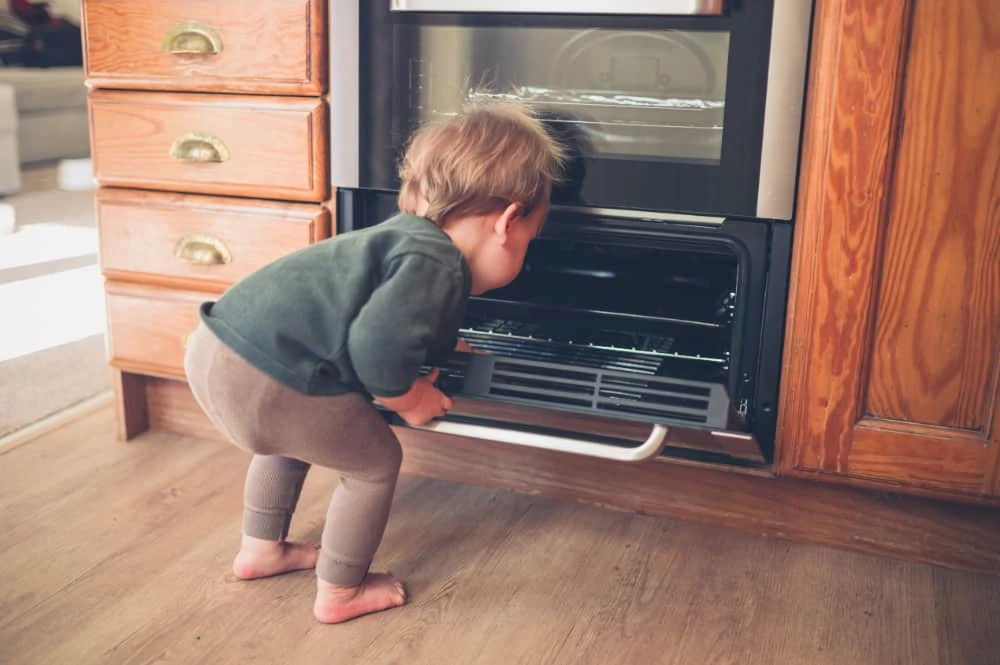
Families love to gather in the kitchen — it’s where they eat, talk about their day and laugh. But with a baby in the mix, it’s far more complicated than that. Babies face a lot of dangers in the kitchen, but the biggest one is generally burns.
Here is a checklist you can use to ensure that your kitchen passes inspection when it comes to your baby and safety.
- Limit your baby’s time in the kitchen: There are so many hazards there that it can be challenging for a busy parent to keep a baby safe. While you’re cleaning or cooking, you might want to put your baby in a contained area like a pack ‘n play or a baby swing.
- Use child safety latches and locks: Some of them can be surprisingly tricky to open, even for adults. They are a great resource for those lower cabinets that hold cleaning products and dishwasher detergents. But keep a close eye on your baby — if he learns how to open those latches, you’ll have to find another home for those products.
Pro Tip
Alex Lund from SafetyNook says their favorite type of latches they install is the catch and hook style because they are the strongest available on the market. Magnetic locks tend to fail over time, and adhesive straps on the front of cabinetry will in most cases ruin the cabinets, or be near impossible to remove later. - Rethink your supply list: These days, there are many great alternatives to cleaning products so you don’t have to keep as many dangerous chemicals around. Things like baking soda and vinegar can do wonders when used for cleaning purposes. Just keep in mind that even “natural products” can be toxic if consumed in large enough doses, so keep them out of reach too.
- Watch out for those plastic store bags: Many of us like to reuse those plastic bags stores put your purchases in. But those bags can be a suffocation hazard for children so you’ll want to keep those out of reach.
- Watch out for the foil: Put your foil up high enough that your baby can’t reach it. As many of us adults have found out the hard way, those jagged cutting strips on those boxes of foil are extremely sharp.
- Get a lockbox for medications: Lockboxes keep your medications in and your curious baby out. Make sure you keep it locked at all times and that your child never sees you putting the key away. Kids have amazing memories.
- Take vitamins seriously: Lock away your multivitamins and iron pills too. The adult doses of iron in those vitamins can be enough to make a child severely ill or even kill them (7).
- Keep your breakable dishes up high: If your baby is able to grab a fragile plate or glass, you can count on it being broken. They’ll drop it in record time, leaving broken glass all around them.
- Knives need to be out of reach: Knives are necessary, but they can be deadly. They need to be kept high enough that your baby can’t grab them or knock them off the counter.
- Watch any dangling cords: If your baby sees a cord leading to a low outlet, it’ll view that as an invitation to pull on that cord to see what happens. That can lead to disaster if your baby is able to pull down a heavy appliance like a toaster — it could land right on them before they even know what’s happening.
- Keep small magnets off your refrigerator: When you want to remember something important like a doctor or dental appointment, you may like to stick up those reminder cards on your refrigerator with a magnet. The trouble is, those magnets can pose a big threat to babies who swallow them — they can cause serious injury to their gastrointestinal tract (8).
- Have a safe drawer: A safe drawer might distract your baby from the other potentially dangerous places in the kitchen. Fill a designated drawer with items your baby can safely play with like plastic food containers, big stirring spoons, big plastic bowls and a small empty milk jug.
Baby Proofing the Living Areas
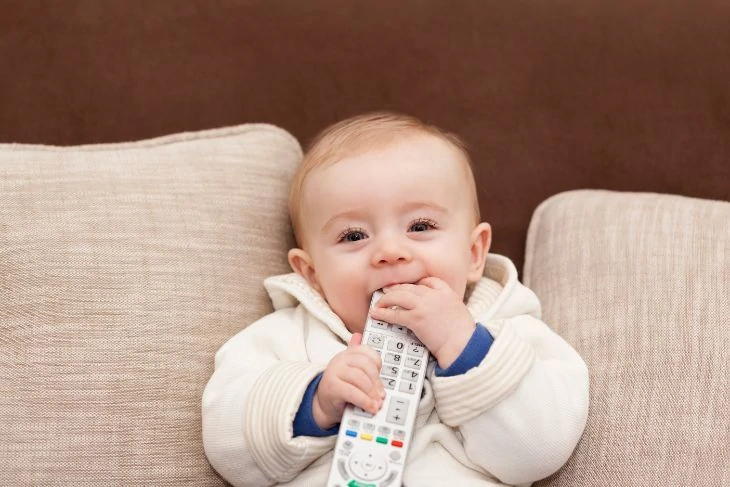
Living rooms have earned that name — these rooms get the most action in your house. Whether you’re sitting in there and talking to your family or quietly watching television, living rooms are busy places. Falls and falling objects, like televisions, are a big danger in the living room.
Here are some ideas on how to babyproof the living room to give your baby room to explore, grow and learn.
- Give carpeting a try: My living room was my favorite room for my baby to be in when she was learning to walk. It had thick carpet to cushion the blows she got from repeatedly falling until she got the hang of her new skill. If you’re more of a hardwood floor type of person, consider adding a sizeable rug for the first couple years of your baby’s life — you’ll save them a lot of misery.
- Choose your coffee table carefully: Coffee tables are great for resting a drink or holding some reading materials. But they sometimes have sharp corners that can be brutal on your baby, especially when she falls and hits her face or teeth on them. Look for one with rounded edges to safeguard your baby, or consider a soft ottoman with storage, as it’s much easier to move around and provides useful good storage for your kiddo’s toys and other goodies.
- Think like a baby: Crawl around on your floor for a few minutes to get a new perspective on what your baby sees. Look for any points of interest that would draw in your baby and determine what could be done to make the room safer.
- Check out the furniture in your living room: Is the television stand firm or does it wobble when you shake on it?
- Make sure there’s nothing your child can climb: Children channel their inner King Kong and start climbing on furniture like it’s the Empire State Building.
- Watch for window cords: If you have blinds in your living room, you need to make sure the cords don’t pose a threat to your baby. Cords from window dressings typically hang down quite low and you don’t want your baby wrapping them accidentally around their neck.
- Fireplace safety: If you have a fireplace in your living room, make sure the matches are kept up high and that you teach your baby from an early age that you don’t want them messing around with the fireplace. When it’s in use, it’s even more important to keep them away because the glass screens often get really hot to the touch and can cause second to third-degree burns.
- Watch the cords around the television and computer: Remember to cover any electrical outlets with covers so your baby can’t stick her precious little fingers in there. You’ll also want to tuck any power cords that are by your television or computer behind the television or computer stand. If you need to unplug something it will be a little extra work for you, but your baby won’t be able to reach it.
- Consider an outlet cover: If, despite your best efforts, you can’t hide your outlet behind your furniture and you need things plugged in, you can get an outlet cover to stop your baby from ripping out your cords.
- Nix the extension cords: It’s better to temporarily say goodbye to some appliances than use extension cords in your living room. Your baby can get into all kinds of trouble with extension cords — from tripping to chewing on them.
Baby Proofing the Bathroom

For the first couple years, all your baby should be doing in the bathroom is taking baths. Although they don’t need to use the facilities like we do, bathrooms still hold plenty of appeal and dangers for babies. Drowning, burns and falls all happen in this room.
Here are some of the safety issues you should be on the lookout for in the bathroom.
- Curling irons can be a hot mess: If you love using curling irons on your hair, you need to make sure they are far out of the reach of your child. If they see one on the edge of the counter, they’ll want to grab it. Or they can grab the cord and pull it down on themselves, leading to a burn.
- Toilets look like a lot of fun: Remember to keep the lid on your toilet down or invest in a toilet lid lock. If you leave the lid up and forget to close the door, babies can be drinking toilet water before you even know they are in there. Toilets are also drowning hazards.
- Forget the toilet bowl cleanser: Unless you’re certain there’s no way for your baby to get in the bathroom unsupervised, you should skip those toilet cleaning tablets that last for months — ingesting them can be very dangerous (9). You don’t want harmful chemicals in your toilet water in case your baby gets access and starts to drink.
- Keep your razors out of reach in the shower: Babies are used to bath toys when they are in the tub and your razor can look like a toy they haven’t gotten to play with yet.
- Those medications need to be locked up: If you prefer to store your medicines in the bathroom cabinet instead of in the kitchen, make sure to install a childproof lock on it to keep your child out. Adult medicines can look like candy to unsuspecting children.
- Make sure your child won’t be scalded: Even if you love your long, hot showers, you need to scale back your water heater to a temperature less than 120 degrees. Your idea of a hot shower could land your baby some serious burns. If you cannot keep your hand under the hot water only, the water heater is set too high.
- Don’t take your eyes off your bathing baby: No matter what, never leave your baby’s side during a bath. Those few seconds of inattention could be life-changing.
- Check the screw covers on the base of the toilet: Those covers are easy to take off, especially for babies who are willing to work at it to get what they want. They can present choking hazards.
- Put your toothpaste out of reach: Although it’s not likely to pose a serious threat unless a big amount has been swallowed by your child, eating toothpaste can cause stomach symptoms like puking and diarrhea (10).
- Add a mat: Non-slip bath mats can prevent a lot of bathroom accidents. A wet floor and a less than sure-footed toddler can leave to falls in the bathroom if you don’t have a mat to help. You’ll want one on the floor right outside the bathtub and one in the bathtub where the floor can become slippery from shampoo and soap residue.
- Check those bath toys: My kids love their bath toys, but I view them with suspicion. I’ve rarely had a bath toy that hasn’t started to grow mold or mildew within a few weeks or months. You might want to buy duplicates of your child’s favorite bath toys because those things are impossible to clean — you’ll have to throw them away once the mold starts growing.
- Keep plugged in items away from water sources: Electrocution is still a very real threat for children, even when they get to their teen years.
Baby Proofing the Nursery
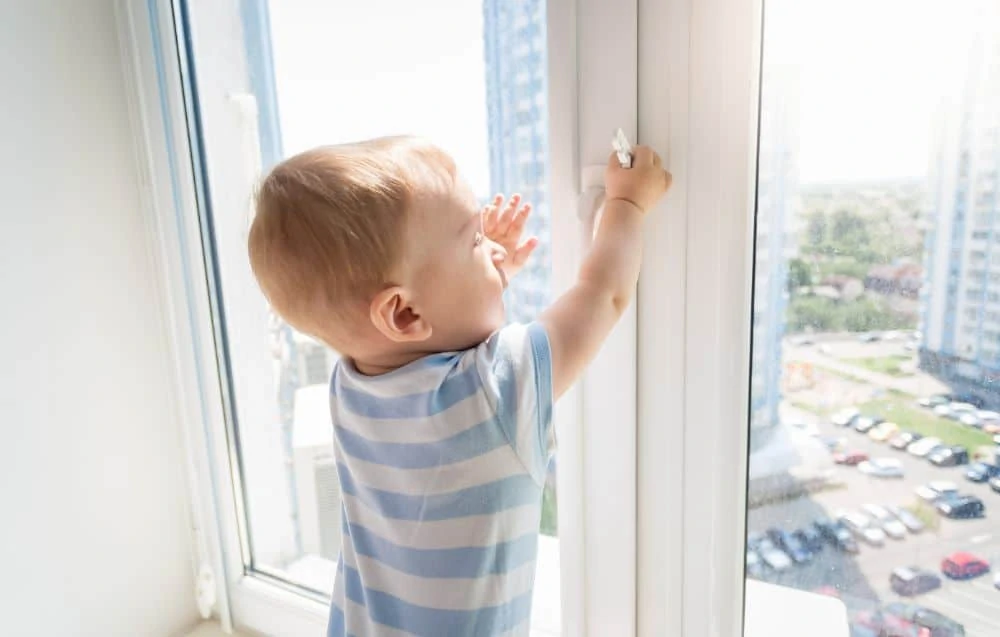
You spend hours dreaming up how to decorate your child’s nursery. From the color of paint to every piece of furniture, you want to make sure it’s perfect.
But safety trumps appearance every time so make sure you’re spending as much time on making sure the room and its contents won’t hurt your child. Suffocation is the main risk in the nursery, especially at night.
Here are some of the safety issues you should be on the lookout for in the nursery.
- Use a baby monitor: Your child may be awake in the nursery without you even knowing it. Consider a baby monitor that picks up noise and even a camera so you can check frequently to make sure your baby isn’t getting too curious for their own good. But make sure the monitor is as far away from the crib as possible. The last thing you want is your curious toddler to get hold of the monitor and start fiddling around with the cords.
- Be wary of secondhand cribs: Bargains are a great thing, but if you’re using an old family hand-me-down crib, you’ll have no idea whether it contains lead paint.
Old cribs may also have too wide slats. Crib slats should be closer than 2 5/8th inches or 6 centimeters (less than the width of a soda can). Widely placed slats are a risk for the baby getting head stuck between the slats.Editor's Note:
Dr. Pierrette Mimi Poinsett, MD - Put up a window guard: If your windows are always closed, you may be able to skip this step. But if they are easy to open or you like to have fresh air blowing in, you should get a window guard to keep your baby safe.
- Look for a crib with fixed sides: Drop-side cribs seem convenient for parents who struggle to lift a baby high enough over the side of the crib. But drop-side cribs have been known to hurt or kill babies (11).
- Your baby doesn’t need a pillow: In fact, they aren’t just unnecessary — they’re dangerous. Get rid of any fluffy, stuffed animals or blankets that you thought would look cute in your baby’s crib. They are suffocation hazards.
- Toy chests are dangerous: How many of us adults have had our fingers crushed by toy chests that had the lid come slamming down when you tried to close it? The best solution is to take off the lid — that prevents the danger to fingers and heads getting slammed and also the suffocation risk. Alternatively, consider buying toy chests with slow closing hinges.
- Stop your baby from sleepwalking or exploring while you’re sleeping: If your child has graduated to a toddler bed, congratulations, it may be a long time until you get a good night’s sleep. Toddlers are little nocturnal explorers. Put up a baby gate in your child’s bedroom to stop them from getting into sticky situations throughout the house when they decide to go exploring when you’re sleeping.
- Keep the nursery garbage covered: Make sure your baby can’t reach into the diaper pail in the nursery. You don’t want to walk in to find your baby has eaten the contents of one of their poopy diapers. Many pails have childproof lids to avoid that situation.
- Keep the walls around the crib free of decorations: You don’t want your baby to attempt to reach a wall hanging and end up knocking it down into their crib. Some wall art or picture frames are so heavy they could cause serious damage if your baby knocked it down on themselves. Small sticker decals also pose a choking hazard if peeled off the walls.
- Consider a glider over a rocking chair: It’s easy for babies to rock over their fingers or toes with an old-fashioned rocking chair. A better option is a nursery glider that comes with a lock on it so when you aren’t using it, it won’t pose a risk to your baby.
- Take mobiles down as your baby becomes more mobile: Once your baby is capable of getting up on their hands and knees, it’s time to take down mobiles above the crib.
- Keep cribs away from windows: You want to avoid having your baby grab cords for blinds or curtains, just in case they would get them wrapped around their necks.
Baby Proofing the Stairs
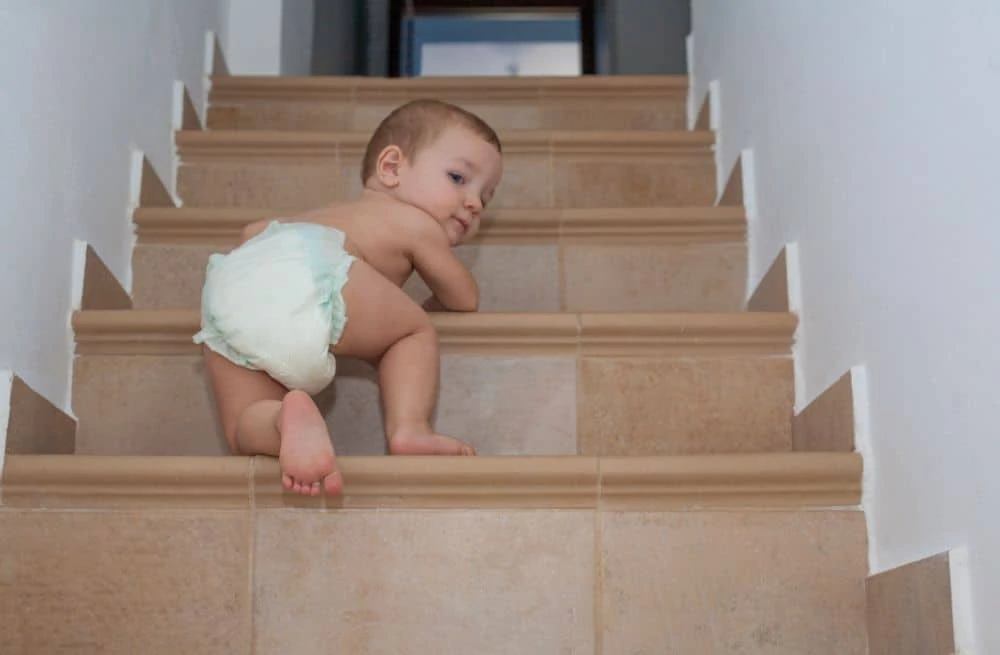
Stairways look like an interesting challenge to an exploring child. But each day, around 8,000 children visit the emergency room after they’ve fallen. A few precautions around your staircase will prevent a possible injury and costly hospital bills.
Here is what you can do.
- Close the door: If you have a staircase that can be blocked by closing a door, that’s the best way to prevent access for your child.
- Get a baby gate: If you don’t have stairs, you can put a baby gate at the top of the stairway and at the foot of the stairway to keep your baby from trying to crawl up or down them.
- Install a baby gate without drilling: If you rent and can’t make drill marks in the wall without angering your landlord, there are still ways for you to install baby gates. Instead of drilling, you can use zip ties.
- Teach your child how to safely walk stairs: Make sure your stairs have a handrail for your child to use and show them safe ways for them to navigate stairs, even if it means sliding down one at a time on their bottoms until they are old enough to use the handrail.
- Consider some carpeting: Carpeting on the stairs and at the bottom of the stairs can help your child tremendously if they fall down them.
- Wipe up spills: If you don’t have carpeting, you’ll want to keep those steps as dry as possible to prevent falls. If your toddler pours his sippy cup on the steps, wipe it up as soon as possible.
- Shine a little light on the subject: Stairways, especially those leading to the basement, can be dark, dreary places. You’ll want to have a good light your child can use when they climb or walk down the stairs.
Baby Proofing Around the Home

There are many dangers lurking around the inside and outside of your house. From drowning to guns to plants, here is a checklist to help you avoid some of them.
- Keeping doors closed: Properly closing a door can keep your exploring baby from harm’s way in any room in your house. Babies can’t reach doorknobs so that simple measure can keep them safe. As they get older, you can use locks higher up on doors to keep them from going into a room unsupervised.
- Use furniture anchors: If you love some of your furniture and can’t imagine getting rid of it, even though you know it’s a bit wobbly, you should anchor it to the wall. It just takes minutes to do and it can literally save your child’s life.
- Keep your guns locked up an unloaded: Every other day in the U.S. a child dies from an accident involving a gun (12). That doesn’t even count the children who are injured by guns, but survive. A gun safe can prevent every single one of those accidents.
- Plastic bags and dry cleaner bags: One of the most common items you’re likely to find in your home, but also one of the deadliest. Make sure you safely put away plastic bags when you return home.
- Don’t let your green thumb hurt your child: Some kinds of plants are toxic if eaten and since babies are always putting everything in their mouths, you should keep these kinds of plants out of your home.
- Meet your new best friend — the vacuum: Vacuuming often can pick up all the little things you may drop during the course of the day and never even notice. It can help you spot coins your baby could choke on and it can suck up little earrings, batteries, and magnets.
- Keep your booze locked up: Alcohol and kids don’t mix. Keep your bottles well out of their reach. In addition to their harmful contents, if your baby knocks a bottle over, the bottle could break.
- Guard your pool: It takes only seconds for an unsupervised child to drown. Make sure your child doesn’t become a statistic by using pool covers and putting up a pool fence it teaches them from a young age that they can’t go around the pool unless you’re with them.
- Hot tubs are not good for kids: There’s no reason for a kid to be in a hot tub. They are too hot for them and they pose a drowning risk. Keep them covered when not in use.
- Check your doorstops: Many doorstops have a cap that is fairly easy to remove. If yours are simple to take off, seal them on tighter with super glue. If you don’t, they pose a choking hazard.
- Make sure your deck is sanded well: Children have tender feet and they love to run outside before putting their shoes on if they’re excited about something. To avoid splinters, check your deck to see if it could use a good sanding. While you’re at it, inspect it to make sure there aren’t any stray nails sticking out.
- Consider a privacy fence: If you can afford it, a privacy baby fence in your backyard can be a wonderful thing. It can give your child a safe place to play — you can be certain your child isn’t playing in the street and it keeps any unfriendly and potentially dangerous dogs in your neighborhood away from your family. To cut costs, you can put up your fence yourself.
- Don’t jump to purchase a trampoline: Trampolines are fun and great exercise, but kids under 6 are the ones most often injured while using them (13). Not buying one for your house is the best policy, but if you do, you should outlaw flips, the frame should be covered with padding, adults should always supervise, a net enclosing the trampoline is a good idea, and there should only be one jumper at a time.
Baby Proofing FAQs
The Peace of Mind Is Worth It
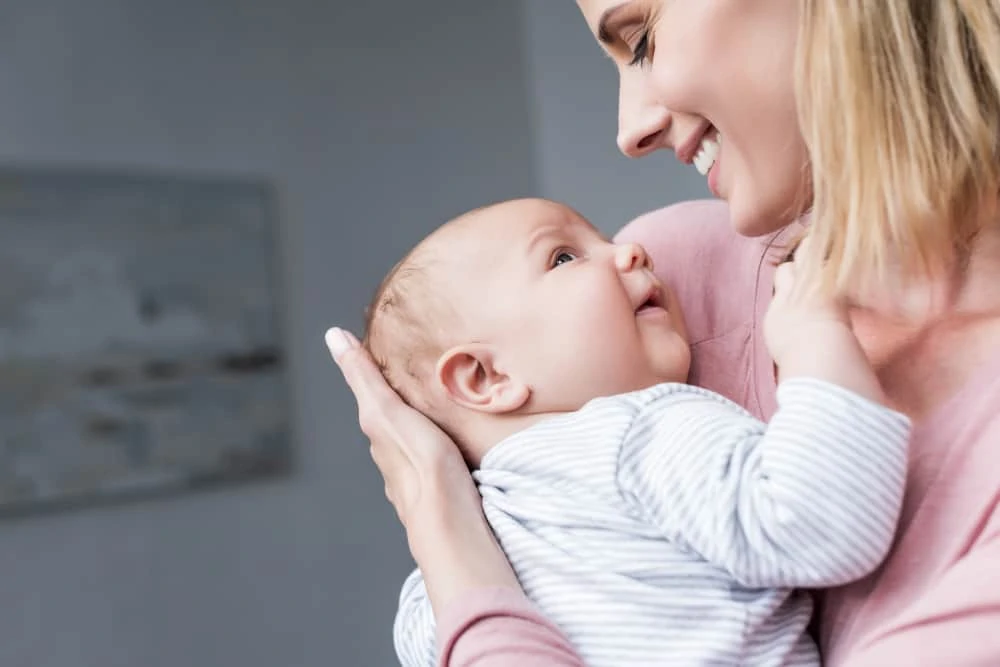
Moms deal with so much stuff that is beyond our control. Baby proofing your home makes it safer, however, it does not replace good supervision when your child is awake.
The checklist you have to go over may seem daunting at first, but it goes surprisingly quickly once you get started.

